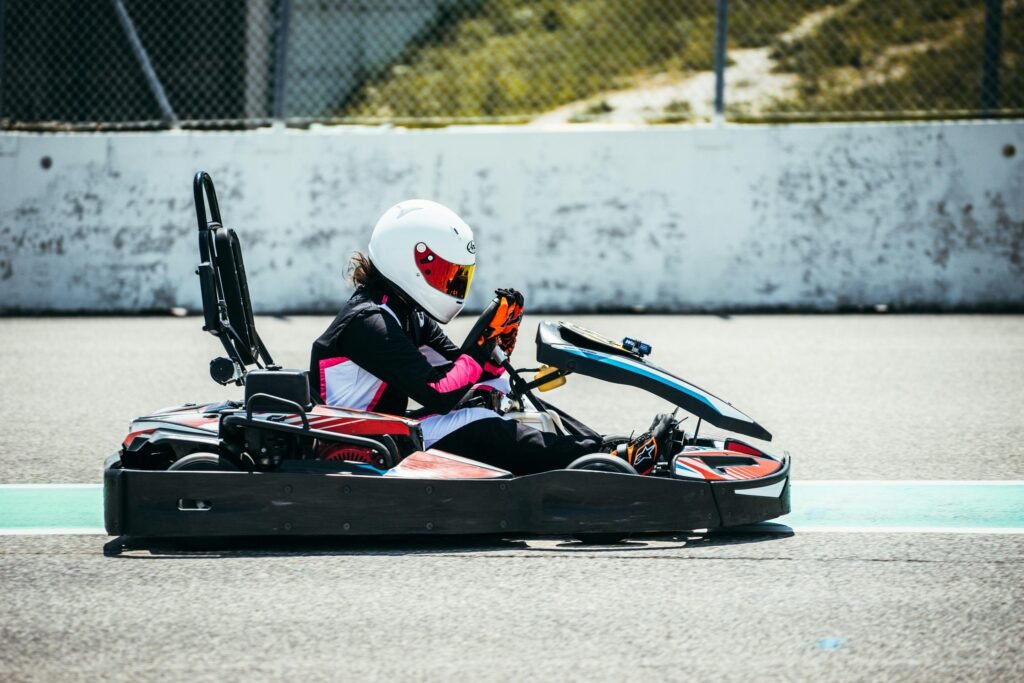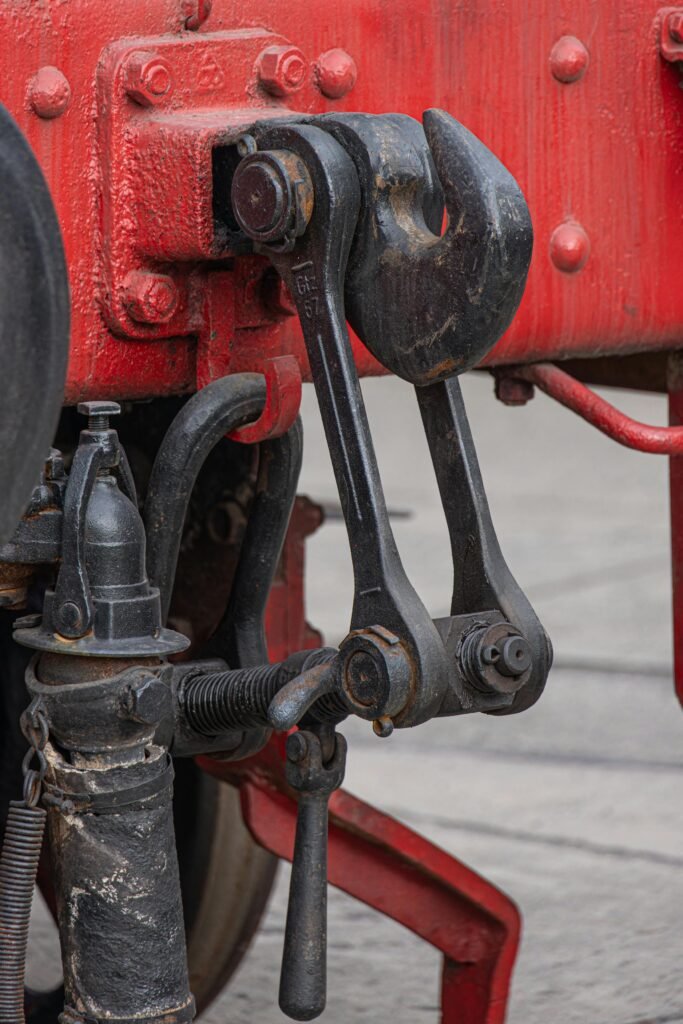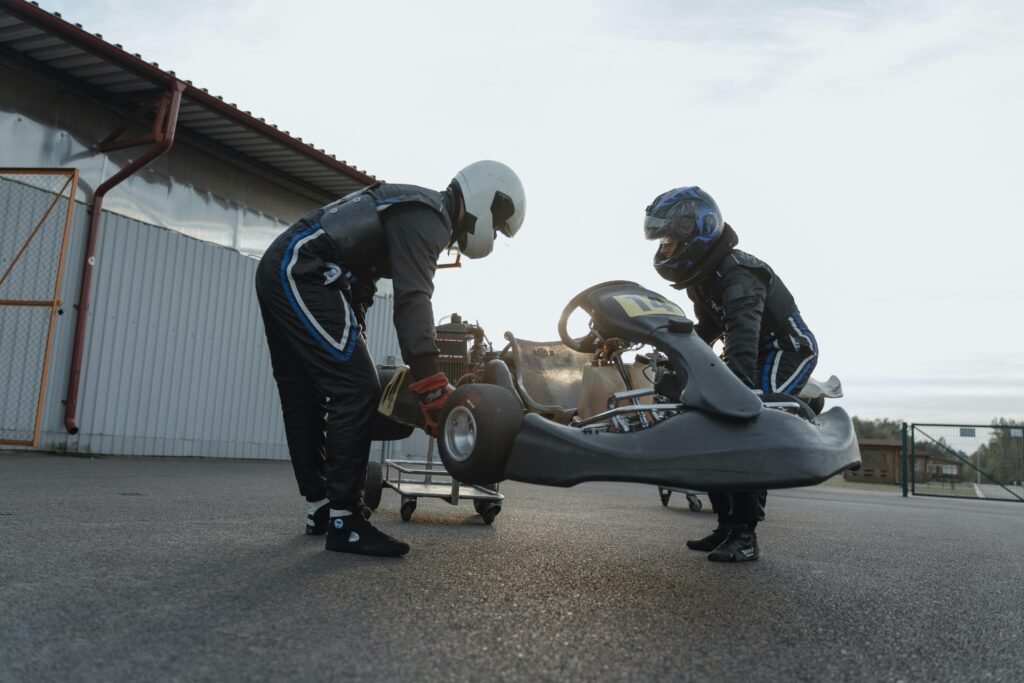Understanding the Physics and Engineering of Speed
Kart racing, often seen as a thrilling recreational activity or an entry into professional motorsports, is deeply rooted in scientific principles. Every maneuver on the track—whether it’s accelerating, braking, or navigating tight corners—is governed by physics, engineering, and biomechanics. Understanding these elements not only enhances performance but also showcases the intricate science behind what makes karting such an exhilarating and challenging sport.

Let’s dive into the science behind kart racing, exploring the physical forces at play, the engineering of go-karts, and how drivers harness these principles to achieve maximum speed and control.
1. The Physics of Speed: Force, Mass, and Acceleration
At the core of kart racing lies Newton’s Second Law of Motion, which states that force equals mass times acceleration (F=ma). This principle governs the motion of go-karts on the track.
- Force: Generated by the engine, this powers the wheels and dictates how quickly the kart accelerates.
- Mass: The combined weight of the kart and driver influences acceleration. Lighter karts typically accelerate faster since less force is needed to propel them.
- Acceleration: Refers to how quickly the kart gains speed. Maximizing acceleration on straights is crucial for gaining an edge over competitors.

Friction also plays a vital role in karting. Tire friction provides the necessary traction between the kart and the track. Striking the right balance is key—too much friction slows the kart down, while too little causes skidding.
- Key Takeaway: Speed and acceleration in karting depend on the balance between the kart’s mass, engine power, and tire friction.
2. Aerodynamics and Drag Reduction
While go-karts don’t have the sophisticated wings and bodywork of Formula 1 cars, aerodynamics still plays a crucial role in optimizing speed, especially at higher velocities. Minimizing aerodynamic drag—the resistance of air as the kart moves forward—is vital for reaching top speeds.
- Drag increases with speed: As karts accelerate, air resistance becomes more significant, slowing them down if not minimized.
- Driver position impacts drag: By sitting low in the kart, drivers reduce their frontal area, minimizing air resistance and maintaining higher speeds.
Though downforce—the downward pressure that improves tire grip—is less relevant in karting due to the open nature of karts, reducing drag can significantly enhance overall performance.
- Key Takeaway: Minimizing drag by adopting a low, streamlined position allows for faster lap times and better speed on straights.
3. Cornering: The Physics of Turning and Centripetal Force
Cornering is one of the most critical aspects of kart racing, where physics and skill intersect. When entering a turn, the kart experiences centripetal force, which keeps it on a circular path rather than moving straight.
- Centripetal force: Pulls the kart inward as it navigates the curve, essential for following the track’s layout.
- Tire grip: The friction between the tires and the track—referred to as lateral grip—keeps the kart from sliding outwards during turns.

Mastering corners requires finding the balance between speed and grip. The racing line—the optimal path around a corner—helps drivers maintain the highest speed while preserving tire grip. Hitting the apex of the corner, the point closest to the inside of the track, minimizes distance and maximizes exit speed.
- Key Takeaway: Effective cornering relies on balancing centripetal force and tire grip while following the optimal racing line.
4. Braking: Managing Momentum and Weight Transfer
Braking in kart racing is about much more than just slowing down—it’s about managing momentum and preparing for the next section of the track. Precise braking helps drivers control their entry into corners and maintain the momentum needed for a fast exit.
- Weight transfer: When braking, the kart’s weight shifts forward, increasing the load on the front tires. This extra grip on the front wheels aids in cornering, but excessive braking can reduce overall control.
- Threshold braking: A technique that involves applying maximum braking force without locking up the tires. Locked tires reduce grip, causing skidding and loss of control.
Kart drivers must master braking to decelerate just enough before a corner while maintaining enough speed for a quick exit.
- Key Takeaway: Braking is about controlling momentum, with an emphasis on weight transfer and maximizing braking force without losing grip.

5. The Role of G-Forces in Driver Performance
G-forces refer to the gravitational forces experienced during acceleration, deceleration, and turns, and kart drivers often experience up to 3-4 g’s in fast corners. This places significant strain on the body, especially on the neck, core, and arm muscles.
- Lateral g-forces: These are felt during sharp turns when the kart changes direction. Drivers must brace themselves against the forces pushing them sideways.
- Vertical g-forces: Occur when the kart goes over bumps or elevation changes, impacting how the kart grips the track.
Over time, drivers build physical endurance to withstand these forces, relying heavily on core strength and neck stability to stay in control throughout a race.
- Key Takeaway: High g-forces challenge a driver’s endurance, making physical fitness and strength critical for optimal performance.
6. The Engineering of Go-Karts
The design and engineering of go-karts are optimized for agility, speed, and safety. Several key components define the kart’s performance:
- Chassis: The lightweight yet durable frame of the kart maximizes agility without sacrificing structural integrity.
- Engine: Most karts are powered by small, four-stroke engines, although higher-end models may use electric motors or two-stroke engines for greater speed. The engine’s power output directly affects acceleration and top speed.
- Tires: Kart tires are crucial for grip. Slick tires offer maximum grip on dry tracks, while rain tires with treads are used in wet conditions to prevent skidding.
Kart engineering also takes into account steering geometry, which influences how responsive the kart is when navigating corners. The combination of a lightweight chassis and responsive steering allows karts to make sharp turns at high speeds.

- Key Takeaway: Kart engineering focuses on creating lightweight, agile machines capable of delivering maximum speed and control.
Mastering the Science of Karting
Kart racing is a dynamic interplay of physics, engineering, and driver skill. By understanding the principles of acceleration, cornering, braking, and aerodynamics, drivers can optimize their performance and gain a competitive edge on the track. Whether you’re a casual karting enthusiast or an aspiring professional, mastering the science behind karting can elevate your racing experience to new heights.
The next time you hit the track, remember—you’re not just racing against the clock or other drivers, but also harnessing the power of physics and engineering to achieve peak performance.
